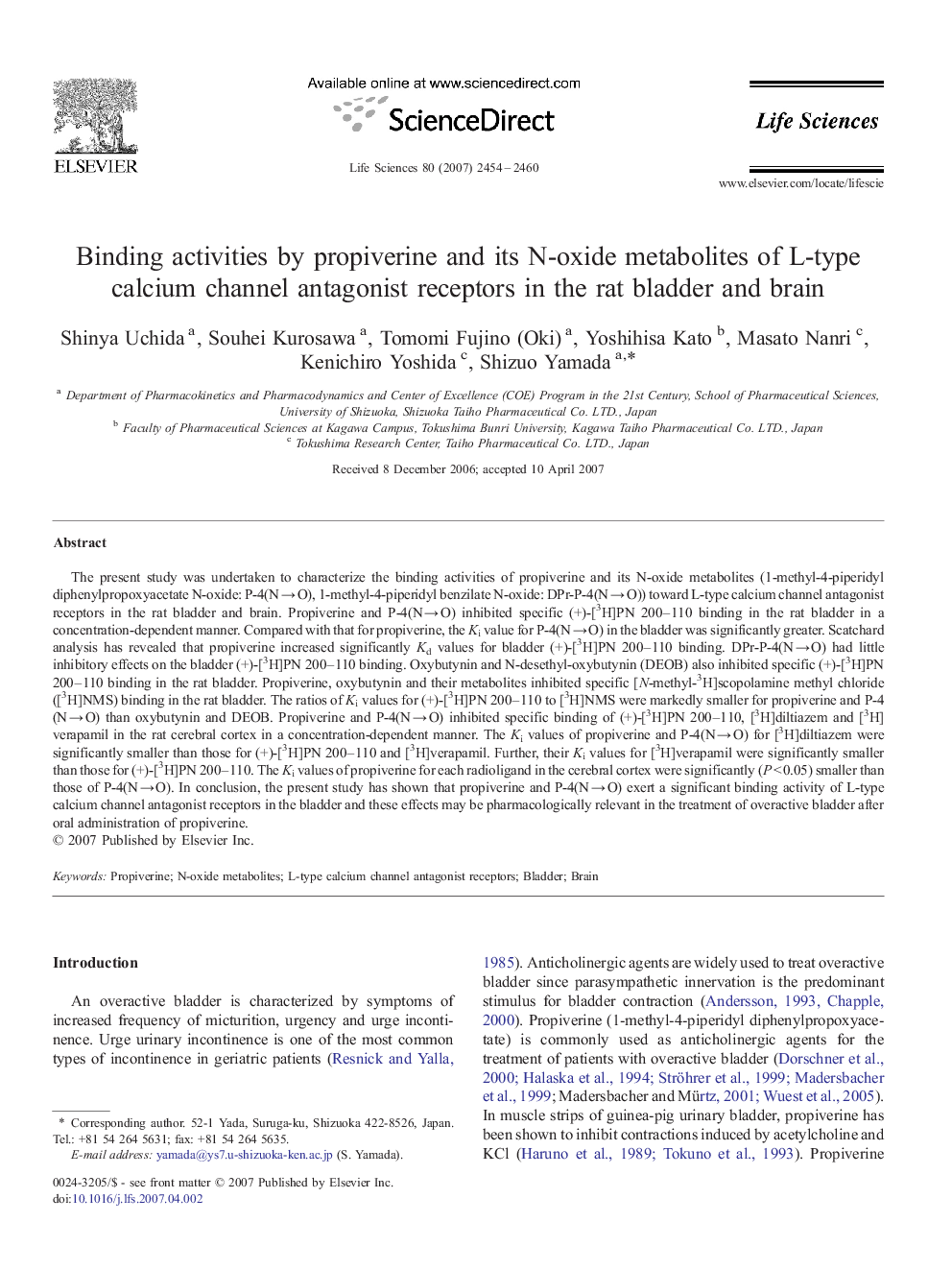| Article ID | Journal | Published Year | Pages | File Type |
|---|---|---|---|---|
| 2553263 | Life Sciences | 2007 | 7 Pages |
The present study was undertaken to characterize the binding activities of propiverine and its N-oxide metabolites (1-methyl-4-piperidyl diphenylpropoxyacetate N-oxide: P-4(N → O), 1-methyl-4-piperidyl benzilate N-oxide: DPr-P-4(N → O)) toward L-type calcium channel antagonist receptors in the rat bladder and brain. Propiverine and P-4(N → O) inhibited specific (+)-[3H]PN 200–110 binding in the rat bladder in a concentration-dependent manner. Compared with that for propiverine, the Ki value for P-4(N → O) in the bladder was significantly greater. Scatchard analysis has revealed that propiverine increased significantly Kd values for bladder (+)-[3H]PN 200–110 binding. DPr-P-4(N → O) had little inhibitory effects on the bladder (+)-[3H]PN 200–110 binding. Oxybutynin and N-desethyl-oxybutynin (DEOB) also inhibited specific (+)-[3H]PN 200–110 binding in the rat bladder. Propiverine, oxybutynin and their metabolites inhibited specific [N-methyl-3H]scopolamine methyl chloride ([3H]NMS) binding in the rat bladder. The ratios of Ki values for (+)-[3H]PN 200–110 to [3H]NMS were markedly smaller for propiverine and P-4(N → O) than oxybutynin and DEOB. Propiverine and P-4(N → O) inhibited specific binding of (+)-[3H]PN 200–110, [3H]diltiazem and [3H]verapamil in the rat cerebral cortex in a concentration-dependent manner. The Ki values of propiverine and P-4(N → O) for [3H]diltiazem were significantly smaller than those for (+)-[3H]PN 200–110 and [3H]verapamil. Further, their Ki values for [3H]verapamil were significantly smaller than those for (+)-[3H]PN 200–110. The Ki values of propiverine for each radioligand in the cerebral cortex were significantly (P < 0.05) smaller than those of P-4(N → O). In conclusion, the present study has shown that propiverine and P-4(N → O) exert a significant binding activity of L-type calcium channel antagonist receptors in the bladder and these effects may be pharmacologically relevant in the treatment of overactive bladder after oral administration of propiverine.
